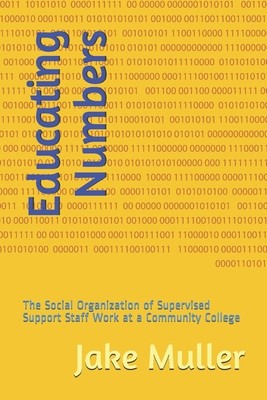
- We will send in 10–14 business days.
- Author: Jake Muller
- Publisher: INDEPENDENTLY PUBLISHED
- ISBN-10: 1070425516
- ISBN-13: 9781070425511
- Format: 15.2 x 22.9 x 2.1 cm, softcover
- Language: English
- SAVE -10% with code: EXTRA
Reviews
Description
This book presents ethnographic research that reveals how everyday ruling is carried out in a small community college through the use of student numbers or enrollments. The research focuses on selected support staff employees that shows how they do their work, despite impediments from some of their managers, that creates the student numbers and their use in this institution. Each employees work, with First Nations and other students, is part of an organized series of related steps or an educational circuit mediated through the use of texts, documents and reports. These employees create the student numbers in programs and courses mostly by entering student information into the institutions database network. A concurrent institutional circuit is undertaken by the work of an employee who works only with these student numbers as data. This second circuit consists of distributing that student data, such as full-time equivalent (FTE) students, weekly within the institution, and annually to management for their report to the provincial government ministry of advanced education and skills training. The research advances that these two related education circuits, that are mediated by texts, are part of how the ruling of this institution is organized and carried out
EXTRA 10 % discount with code: EXTRA
The promotion ends in 16d.02:01:13
The discount code is valid when purchasing from 10 €. Discounts do not stack.
- Author: Jake Muller
- Publisher: INDEPENDENTLY PUBLISHED
- ISBN-10: 1070425516
- ISBN-13: 9781070425511
- Format: 15.2 x 22.9 x 2.1 cm, softcover
- Language: English English
This book presents ethnographic research that reveals how everyday ruling is carried out in a small community college through the use of student numbers or enrollments. The research focuses on selected support staff employees that shows how they do their work, despite impediments from some of their managers, that creates the student numbers and their use in this institution. Each employees work, with First Nations and other students, is part of an organized series of related steps or an educational circuit mediated through the use of texts, documents and reports. These employees create the student numbers in programs and courses mostly by entering student information into the institutions database network. A concurrent institutional circuit is undertaken by the work of an employee who works only with these student numbers as data. This second circuit consists of distributing that student data, such as full-time equivalent (FTE) students, weekly within the institution, and annually to management for their report to the provincial government ministry of advanced education and skills training. The research advances that these two related education circuits, that are mediated by texts, are part of how the ruling of this institution is organized and carried out


Reviews